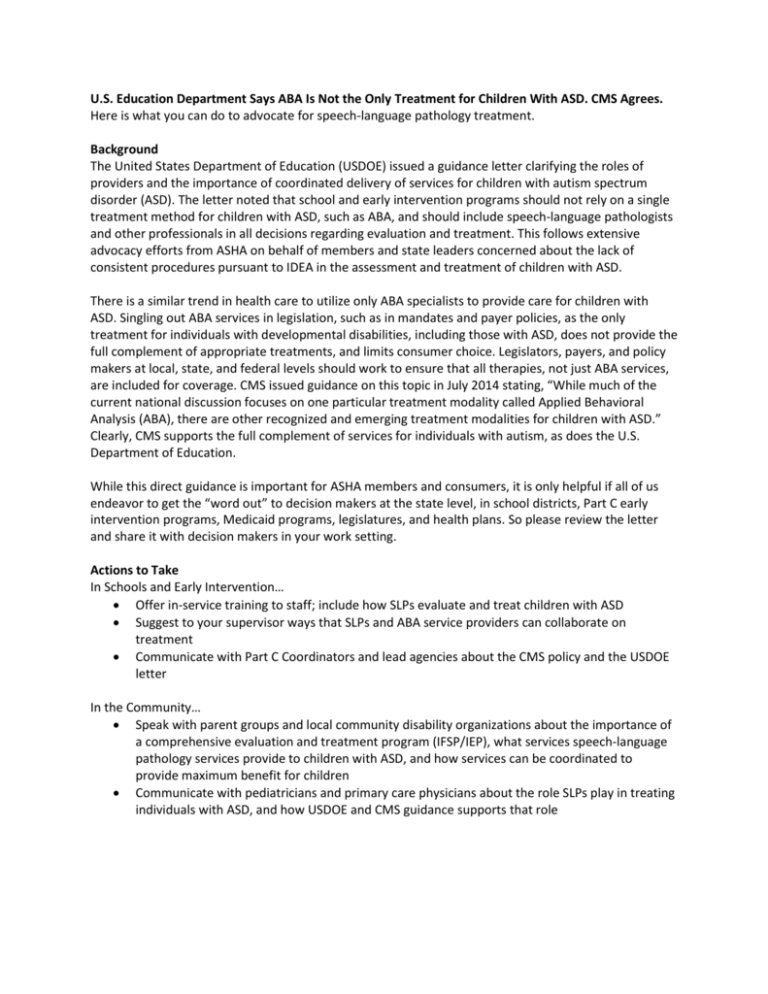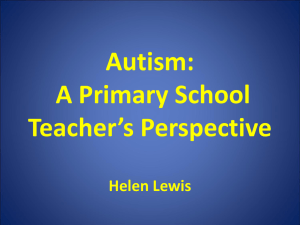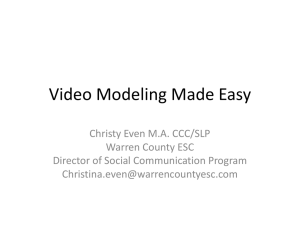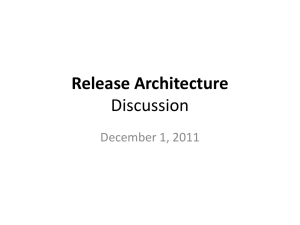DOE/CMS Guidance Cover Letter - Oregon Speech and Hearing
advertisement

U.S. Education Department Says ABA Is Not the Only Treatment for Children With ASD. CMS Agrees. Here is what you can do to advocate for speech-language pathology treatment. Background The United States Department of Education (USDOE) issued a guidance letter clarifying the roles of providers and the importance of coordinated delivery of services for children with autism spectrum disorder (ASD). The letter noted that school and early intervention programs should not rely on a single treatment method for children with ASD, such as ABA, and should include speech-language pathologists and other professionals in all decisions regarding evaluation and treatment. This follows extensive advocacy efforts from ASHA on behalf of members and state leaders concerned about the lack of consistent procedures pursuant to IDEA in the assessment and treatment of children with ASD. There is a similar trend in health care to utilize only ABA specialists to provide care for children with ASD. Singling out ABA services in legislation, such as in mandates and payer policies, as the only treatment for individuals with developmental disabilities, including those with ASD, does not provide the full complement of appropriate treatments, and limits consumer choice. Legislators, payers, and policy makers at local, state, and federal levels should work to ensure that all therapies, not just ABA services, are included for coverage. CMS issued guidance on this topic in July 2014 stating, “While much of the current national discussion focuses on one particular treatment modality called Applied Behavioral Analysis (ABA), there are other recognized and emerging treatment modalities for children with ASD.” Clearly, CMS supports the full complement of services for individuals with autism, as does the U.S. Department of Education. While this direct guidance is important for ASHA members and consumers, it is only helpful if all of us endeavor to get the “word out” to decision makers at the state level, in school districts, Part C early intervention programs, Medicaid programs, legislatures, and health plans. So please review the letter and share it with decision makers in your work setting. Actions to Take In Schools and Early Intervention… Offer in-service training to staff; include how SLPs evaluate and treat children with ASD Suggest to your supervisor ways that SLPs and ABA service providers can collaborate on treatment Communicate with Part C Coordinators and lead agencies about the CMS policy and the USDOE letter In the Community… Speak with parent groups and local community disability organizations about the importance of a comprehensive evaluation and treatment program (IFSP/IEP), what services speech-language pathology services provide to children with ASD, and how services can be coordinated to provide maximum benefit for children Communicate with pediatricians and primary care physicians about the role SLPs play in treating individuals with ASD, and how USDOE and CMS guidance supports that role In health and private settings… Communicate with local Medicaid and department of health representatives about the CMS policy and USDOE letter Communicate with health plan representatives and regulators about how the CMS policy and USDOE letter can and should influence payer policies State legislators and regulators… Meet with legislators to discuss how the CMS policy and USDOE letter can influence state and payer policies Communicate with state insurance regulators about ACA Marketplace exchange plans that require habilitation services, such as speech-language treatment, and how individuals with ASD, who make up a subset of the population with developmental disabilities, may need habilitative services, as well as behavioral treatments, such as ABA Talking Points SLPs are uniquely qualified to provide assessment and treatment of communication disorders for children with ASD, including social communication disorders Under IDEA Part B, a Free and Appropriate Public Education (FAPE) must be available to all students with disabilities under the law; allowing ABA therapists to dictate services is a violation of the law IDEA requires that decisions about services must be made by a full complement of appropriate qualified providers following a comprehensive evaluation IDEA’s IEP and IFSP processes are designed to ensure that an appropriate program is developed to meet the unique individual needs of a child with a disability, and that services are identified based on the unique needs of the child by a team An ABA therapist may serve on the team, but is not the sole decision maker and cannot restrict access to services by other team members, such as SLPs No one treatment (including ABA) is appropriate for all individuals with ASD or other developmental disabilities Regarding Medicaid coverage, CMS recognizes that there are other treatments for children with ASD besides ABA, and that CMS, too, supports the full complement of appropriate services








